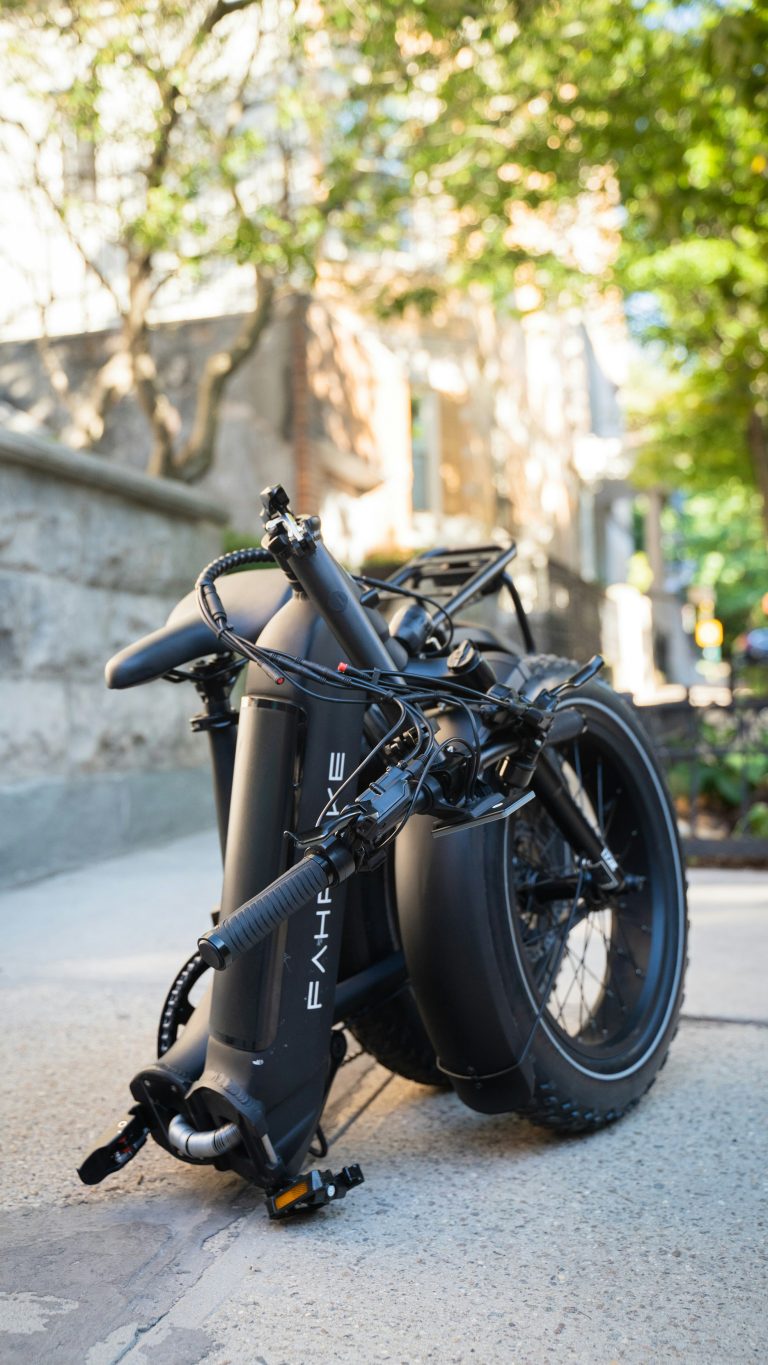Which Electric Bike Battery Is Best?
Looking to take your cycling experience to the next level with an electric bike? Before you get pedaling, it’s crucial to understand which electric bike battery is best suited for your needs. With a myriad of options available in the market, selecting the right battery can make all the difference in terms of power, range, and overall performance. In this article, we’ll explore the various types of electric bike batteries, their key features, and help you navigate towards the perfect choice to enhance your electric biking adventure.

Battery Types
When it comes to electric bike batteries, there are several options available to suit different needs and preferences. The three most common types of batteries used in electric bikes are Lithium-ion, Lead-acid, and Nickel-metal hydride (NiMH). Each of these battery types has its own advantages and disadvantages, so it’s important to understand them before making a decision.
Lithium-ion
Lithium-ion batteries have become the go-to choice for many electric bike users due to their lightweight and high energy density. These batteries offer a good balance between weight, power, and capacity. They are known for their excellent performance, longer life cycles, and ability to maintain a consistent power output even as the battery discharges. Lithium-ion batteries are also known for their low self-discharge rates, which means they can hold their charge for extended periods when not in use.
Lead-acid
Lead-acid batteries are the oldest and most traditional type of rechargeable battery used in electric bikes. They are widely available and relatively affordable compared to other options. Lead-acid batteries are known for their robustness and ability to withstand harsh conditions. However, they are significantly heavier and bulkier compared to lithium-ion batteries. They also have a lower energy density, which means they provide less power and have a shorter range. Lead-acid batteries also require regular maintenance, such as topping up the electrolyte and ensuring proper ventilation to prevent gas buildup.
Nickel-metal hydride (NiMH)
Nickel-metal hydride (NiMH) batteries are another option that offers a middle ground between lithium-ion and lead-acid batteries. They provide a decent balance between cost, performance, and energy density. NiMH batteries have a higher energy density than lead-acid batteries but are not as lightweight or efficient as lithium-ion batteries. They are known for their stable voltage output and relatively long lifespan, making them a reliable choice for electric bike users. However, NiMH batteries can be affected by memory effect, which can reduce their overall capacity if not properly maintained.
Battery Capacity
The capacity of an electric bike battery refers to its ability to store energy and provide power for the motor. Two common units used to measure battery capacity are milliampere-hours (mAh) and watt-hours (Wh).
mAh (milliampere-hours)
mAh is a unit of measurement commonly used for smaller batteries like those found in electric bikes. It represents the total amount of current (in milliamperes) that a battery can supply for one hour before being fully discharged. A higher mAh rating typically indicates a higher battery capacity and longer runtime.
Wh (watt-hours)
Wh is a unit of measurement that takes into account both the battery’s voltage and capacity. It represents the total amount of energy (in watt-hours) that a battery can provide over one hour of continuous use. Since electric bike batteries typically have a fixed voltage, a higher Wh rating indicates a larger battery capacity and longer range.
Voltage
The voltage of an electric bike battery determines the power output and compatibility with the bike’s motor and other components. Common voltage ratings for electric bike batteries include 36V, 48V, and 52V.
36V
A 36V electric bike battery is commonly found in entry-level and mid-range electric bikes. It provides a moderate power output and is suitable for casual riders and urban commuting. Electric bikes with a 36V battery usually have a shorter range compared to those with higher voltage batteries but are generally more affordable.
48V
A 48V electric bike battery is considered a step up from a 36V battery in terms of power output. It provides a higher torque and acceleration, making it suitable for riders who require more assistance or ride on hilly terrains. Electric bikes with a 48V battery usually have a longer range and can handle more demanding tasks.
52V
A 52V electric bike battery is one of the highest voltage options available and offers the most power output. It is suitable for riders who need maximum assistance and performance, such as those who ride off-road or frequently tackle steep inclines. A 52V battery provides excellent acceleration and torque, resulting in a thrilling riding experience.
Charging Time
The charging time of an electric bike battery is an important factor to consider, especially for those who rely heavily on their bikes for transportation or have limited access to charging facilities. There are two common methods of charging electric bike batteries: standard charging and fast charging.
Standard Charging
Standard charging refers to the typical charging method that most electric bike batteries use. The charging time can vary depending on the battery capacity, charger output, and other factors. Generally, it takes several hours (usually around 4-6 hours) to fully charge an electric bike battery using standard charging. This method is suitable for overnight charging or when you have ample time to let the battery charge.
Fast Charging
Fast charging is a newer technology that allows electric bike batteries to be charged at a significantly faster rate compared to standard charging. With fast charging, it is possible to charge a battery from zero to full capacity in as little as one to two hours. However, it’s important to note that fast charging may cause increased heat generation and can potentially reduce the overall lifespan of the battery. This method is more suitable for users who require quick charging during short breaks or who have limited time for charging.

Battery Life
The battery life of an electric bike is a crucial aspect to consider as it directly impacts the overall usability and longevity of the bike. Two factors that significantly affect battery life are the number of charge cycles and temperature sensitivity.
Number of Charge Cycles
The number of charge cycles refers to the number of times a battery can be charged and discharged before it starts to degrade or lose its capacity. Most reputable electric bike batteries can endure hundreds or even thousands of charge cycles before experiencing a noticeable decrease in performance. It’s important to note that a full charge cycle is considered when the battery is discharged and recharged from 100% to 0% capacity. Regular and proper maintenance can help extend the battery’s overall lifespan.
Temperature Sensitivity
Electric bike batteries, especially lithium-ion batteries, can be sensitive to temperature changes. Extreme hot or cold temperatures can affect their overall performance and lifespan. It is generally recommended to store and charge electric bike batteries in a temperature-controlled environment to ensure optimal performance and longevity. Additionally, using the bike in extreme temperatures can affect the battery’s range and voltage output.
Weight and Size
The weight and size of an electric bike battery can significantly impact the bike’s overall balance and handling. It’s important to consider these factors, especially if you plan on transporting or carrying your electric bike frequently.
Battery Weight
Battery weight varies depending on the type, capacity, and voltage of the battery. Lithium-ion batteries are generally lightweight compared to lead-acid batteries, making them more suitable for users who prioritize portability and maneuverability. Higher voltage batteries might weigh slightly more than lower voltage options due to the added power and capacity.
Battery Size
Battery size is another crucial aspect to consider, especially for those who have limited space on their bikes or prefer a sleek and compact design. Lithium-ion batteries, due to their higher energy density, tend to have a smaller size compared to lead-acid batteries with the same capacity. However, it’s important to ensure that the chosen battery size is compatible with your bike’s frame and mounting options.

Performance
The performance of an electric bike battery plays a key role in the overall riding experience. Several factors determine a battery’s performance, including motor assistance, range, and power output.
Motor Assistance
The battery provides power to the electric bike’s motor, which determines the level of assistance it offers to the rider. Different electric bike models come with various motor assistance options, such as pedal-assist and throttle control. The battery’s performance directly influences the responsiveness and efficiency of the motor assistance, providing a smooth and enjoyable riding experience.
Range
The range of an electric bike battery refers to the distance it can cover on a single charge before needing to be replenished. The range is influenced by various factors, such as battery capacity, voltage, terrain, rider weight, and level of motor assistance. It’s important to consider your typical riding habits and requirements when choosing a battery with an adequate range to suit your needs. Keep in mind that riding at the maximum motor assistance level can significantly reduce the battery’s range.
Power Output
The power output of an electric bike battery determines the acceleration and overall performance of the bike. A higher power output translates to quicker acceleration and better uphill performance. It’s important to ensure that the chosen battery’s power output is compatible with your bike’s motor and other components to achieve optimal performance.
Price
Electric bike batteries come with a varying price range depending on the type, capacity, voltage, and brand. When considering the price, it’s important to weigh the initial cost against the long-term cost.
Initial Cost
The initial cost of an electric bike battery includes the purchase price of the battery itself and any additional accessories or installation fees. Lithium-ion batteries are generally more expensive compared to lead-acid or NiMH batteries. However, they often offer better performance, longer lifespan, and lower maintenance costs in the long run.
Long-term Cost
The long-term cost of an electric bike battery includes factors like maintenance, replacement, and overall lifespan. Lithium-ion batteries, despite their higher initial cost, often prove to be more cost-effective in the long run due to their longer lifespan and lower maintenance requirements. Lead-acid batteries, on the other hand, may require more frequent replacements and maintenance, which can add to the overall long-term cost.

Environmental Impact
Considering the environmental impact of electric bike batteries is essential for those who prioritize sustainability and eco-friendliness. Two factors to consider are recyclability and toxicity.
Recyclability
Lithium-ion batteries are highly recyclable and have a well-established recycling infrastructure in many parts of the world. Recycling lithium-ion batteries helps reduce the demand for raw materials and prevents potentially hazardous materials from ending up in landfills. Lead-acid batteries are also recyclable, but the recycling process can be more complex due to their heavier and bulkier nature. It’s important to dispose of electric bike batteries responsibly and consult local recycling guidelines.
Toxicity
Some types of batteries, such as lead-acid batteries, can contain potentially toxic materials like lead and sulfuric acid. These materials can pose a risk to the environment if not disposed of properly. Lithium-ion batteries, on the other hand, do not contain as many toxic materials, making them a more environmentally friendly option. However, it’s important to note that improper disposal of any battery type can have negative environmental impacts.
User Reviews
Considering user reviews and feedback can provide valuable insights into the real-world performance and reliability of different electric bike batteries. Checking customer feedback, ratings, and rankings can help you make an informed decision and choose a battery that aligns with your requirements and expectations.
Customer Feedback
Reading customer reviews and feedback can provide firsthand insights into the pros and cons of different electric bike batteries. Look for feedback regarding the overall performance, lifespan, range, charging time, and durability of the batteries. Additionally, consider factors such as customer support, warranty, and brand reputation when analyzing customer feedback.
Ratings and Rankings
Various websites and publications compile ratings and rankings of electric bike batteries based on factors like performance, cost, reliability, and customer satisfaction. These rankings can be a useful resource to gauge the quality and popularity of different battery options. Consider multiple sources and compare rankings to ensure a comprehensive evaluation.
In conclusion, choosing the best electric bike battery involves considering various factors such as battery type, capacity, voltage, charging time, battery life, weight and size, performance, price, environmental impact, and user reviews. By thoroughly understanding these aspects and aligning them with your specific needs and preferences, you can make an informed decision and enjoy a reliable and enjoyable electric biking experience.








